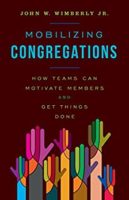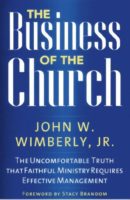
Speaking with clergy around the country during the pandemic, I have heard a universal sense of loss over the dramatically diminished number of personal interactions with members, staff, and the community. Pastors, ministers, rabbis, and priests today are suffering—they are relationship experts at a time when it is challenging to put that expertise to work.
As the Rev. Dr. Jerry Cannon, senior pastor of C.N. Jenkins Memorial Presbyterian Church in Charlotte, N.C., put it, “John, we have lost the secret sauce that makes congregational ministry so tasty.” As he spoke those words, the pain in Jerry’s heart was very much evident.
Looking back at the relationships of Moses or Jesus with their followers, it is clear they would struggle today with the social distancing religious leaders and their flocks have had forced upon them by the pandemic. They too loved the secret sauce. Both men touched and were touched by people as they went about God’s work. While they were good with words, they were even better at building personal relationships with friends and strangers alike.
Congregations without “touch”
As I researched my latest book on virtually managing staff, governance systems, and volunteers in congregations, the issue of “touch” was omnipresent. Clergy unanimously bemoaned their inability to be more engaged in person with staff, members, and the larger community. The lack of face-to-face encounters has created significant communication problems as people have lost the “water-cooler conversations” and “parking lot caucuses.” One rabbi talked about how precious encounters such as those surrounding bar and bat mitzvahs have “turned into Zoom meetings.” African American clergy, especially, yearn for the “amen” responses to their preaching that disappear when preaching to a camera.
The pandemic will end. Really, it will end! When it ends, what will “touch” look like going forward? How will the secret sauce reappear in the lives of congregations?
Some of the answers to those questions may lie in an underappreciated reality in today’s congregations: Because of longer life spans, we are the first version of church and synagogue to have five generations as members. Each generation has its own tastes when it comes to the secret sauce. Some want “touch” to be a pastoral visit to their home; others want it to be a cup of coffee with clergy at Starbucks; others want text messages showing concern.
Five generations
When I first started discussing the impact of our five generations on the life of a congregation with staff and members, many were quick to caution me not to generalize too broadly about their preferences. Some boomers prefer text messages to a pastoral visit while some Gen Zers consider a personal visit from the pastor as welcome attention. Still, one can find strong preferences about “touch” in much of each generation.
As new generations have been appeared over the past fifty years, the definition of “touch” has changed. As a young pastor in the 1970s, I was told by my senior pastor to have 10–15 “touches” with members and visitors each week. By “touch,” he meant “John, go to their homes.” I learned so much from visiting a people’s homes. I remember a visit to a member who had a photo of her son, in uniform, on a living room coffee table. “Gladys, I didn’t know you had a son?” She responded, “He died in Vietnam. I never talk about it.” I never would have known that fact unless I had visited her home. The interiors of our homes say so much about us.
However, by the end of the 20th century, many clergy colleagues were telling me that they rarely visited parishioners’ homes, preferring other ways of being in touch with them. In the 21st century, I found that many younger members preferred just about anything to a personal visit from their pastor. “Can we have lunch or maybe a cup of coffee?” “Can we set up a call?” “Can I stop by the church?” Today, the options would certainly include, “Can we have a Zoom meeting?”
What has not changed
So, the nature of a “touch,” the secret sauce, in religious communities has changed and will continue to evolve. However, two things remain the same:
- The pandemic has given us a renewed appreciation for the incredibly important role “touch” plays in ministry. We can touch each other virtually. However, there are other touches that need to take place face to face. If we cannot achieve a loving, caring “touch” virtually, we need to work hard to realize it in other ways. Learning to differentiate what each person needs and wants in the way of “touch” is a key task for 21st century clergy.
- “Touch” has different meanings among the five generations in our memberships today. For some, a virtual touch is appreciated but, for others, touch must involve some type of face-to-face interaction. The touch may not take place in a home. But take place personally, it must.
I pray for the end of this pandemic because of the immense suffering and death it has caused. I also pray for it to end so we may enjoy one of the best things about being human: physically touching each other. I look forward to tasting once again the secret sauce of congregational life.
John Wimberly is an experienced pastor and consultant. As a consultant, he has worked with congregations and judicatories on strategic planning, staff designs for the 21st century, and congregational growth as well as financial and administrative management. He has MBA, MDiv, and PhD (theology) degrees. His books focus on effective management and leadership. John believes congregations can have a bright future!



